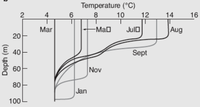
Photo from wikipedia
Abstract Surface heat flux is an important parameter in various industrial applications. It is often estimated based on measured temperature by solving inverse heat conduction problems (IHCPs). In the present… Click to show full abstract
Abstract Surface heat flux is an important parameter in various industrial applications. It is often estimated based on measured temperature by solving inverse heat conduction problems (IHCPs). In the present work, a filter solution to solve 1D single-layer IHCPs is applied to calculate the surface heat flux for 2D multi-layer mediums. An optimal comparison criterion is implemented for 2D IHCPs to optimize the key regularization parameters. Afterward, the 2D filter solution is used for heat flux estimation with thin-film thermocouple (TFTC) and fine thermocouple (FTC) measurements during cryogen spray cooling. The accuracy of the estimated heat fluxes is tested with the measured temperature response to cryogen spray cooling. A small error (maximum value of 1.0740 °C) is observed between the temperature simulated based on estimated heat fluxes and the measured temperature. The maximum heat flux obtained by the 2D filter solution is 13.6% higher than that obtained by 1D method for TFTC measurement. This finding indicates that lateral heat transfer cannot be disregarded, especially when the heat conductivity coefficient of the material is large.
Journal Title: International Journal of Heat and Mass Transfer
Year Published: 2017
Link to full text (if available)
Share on Social Media: Sign Up to like & get
recommendations!